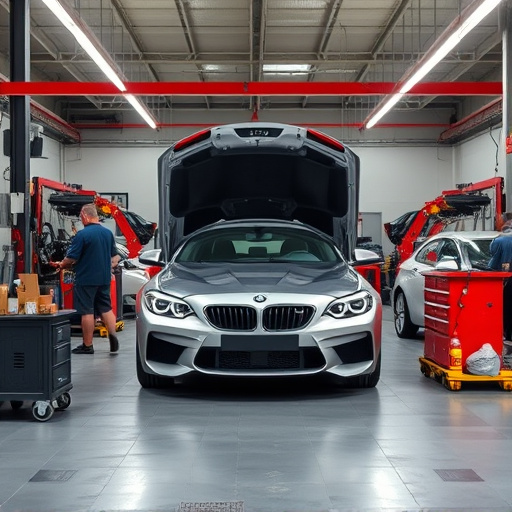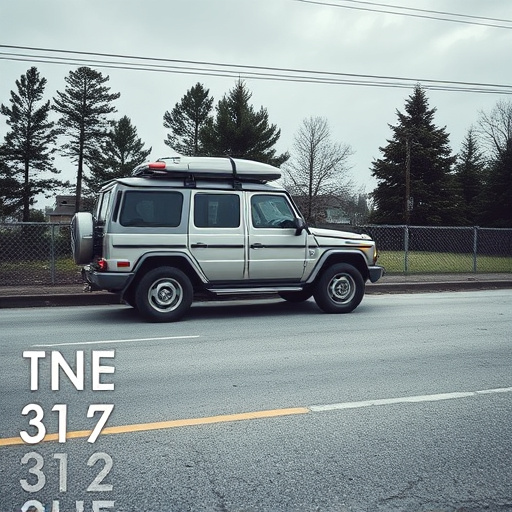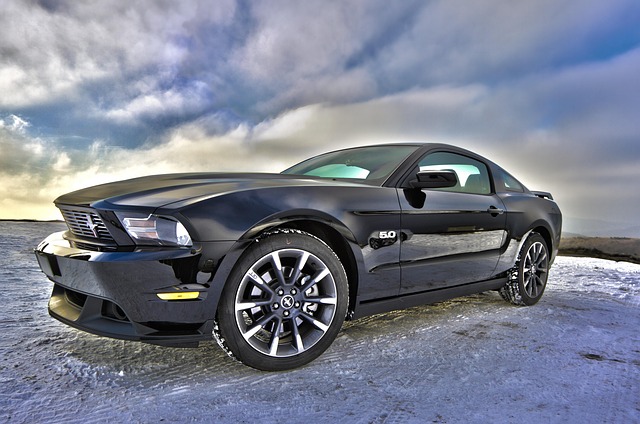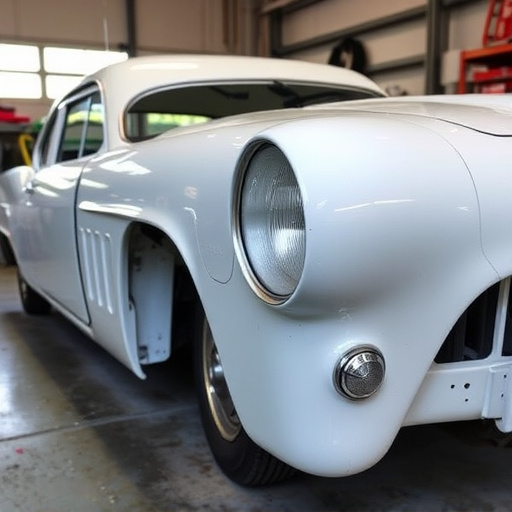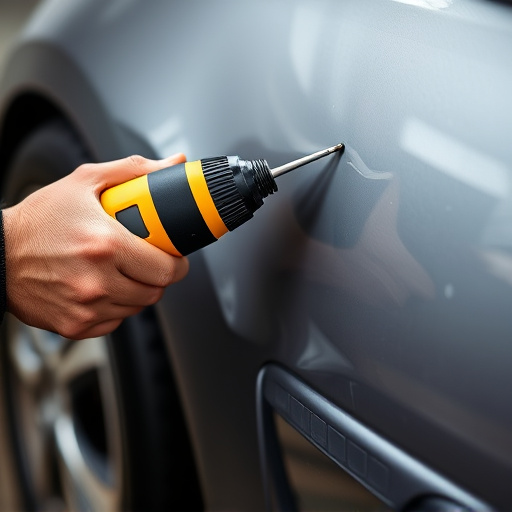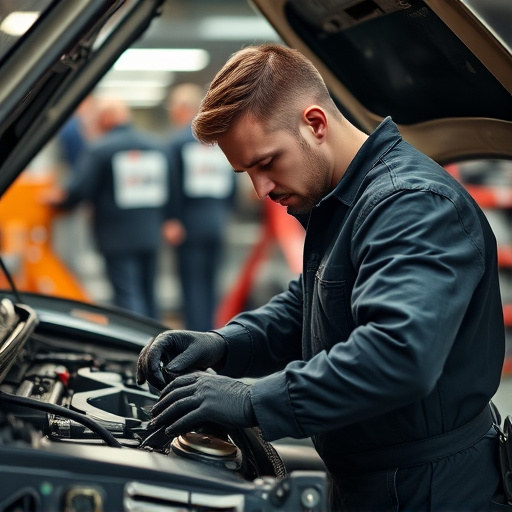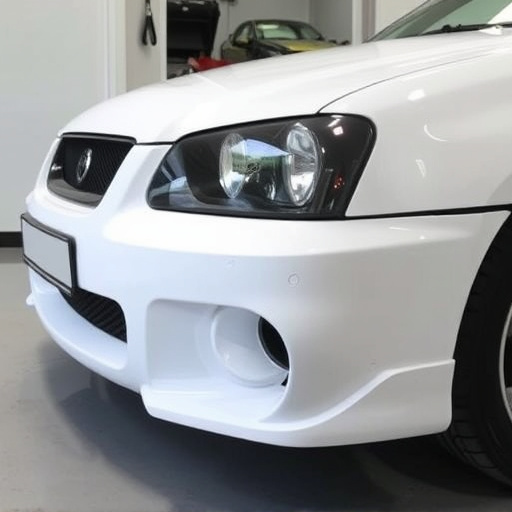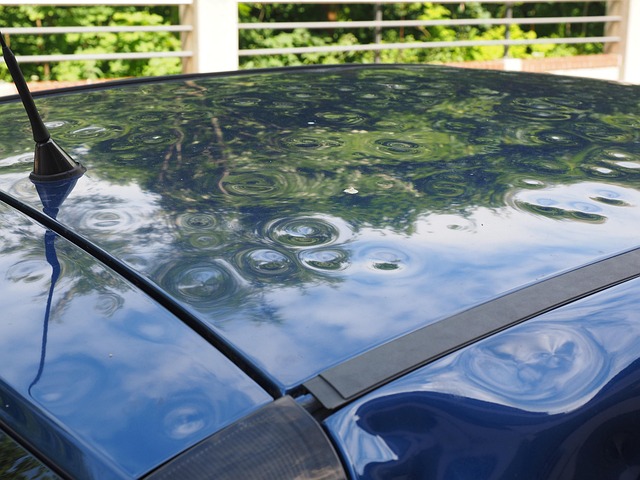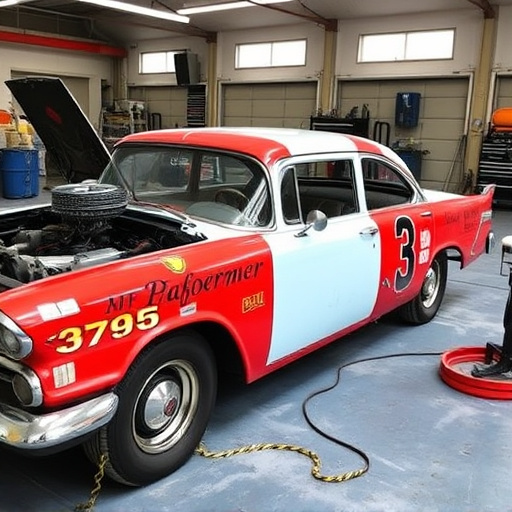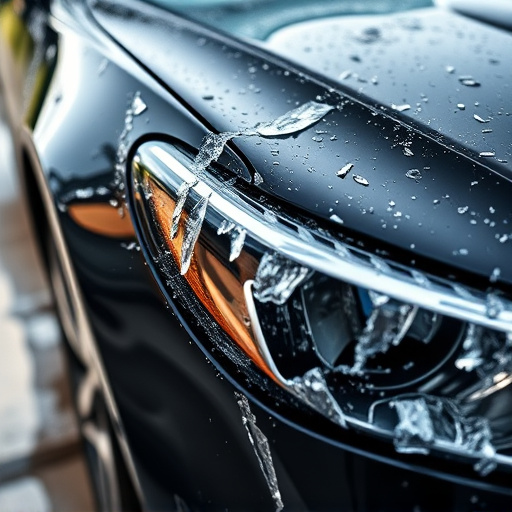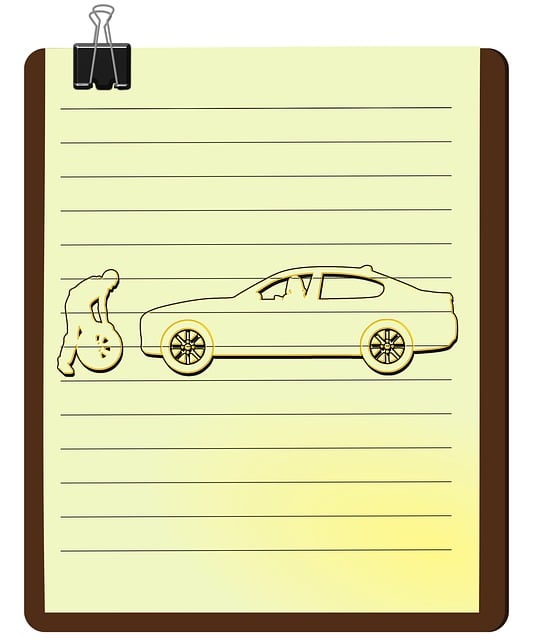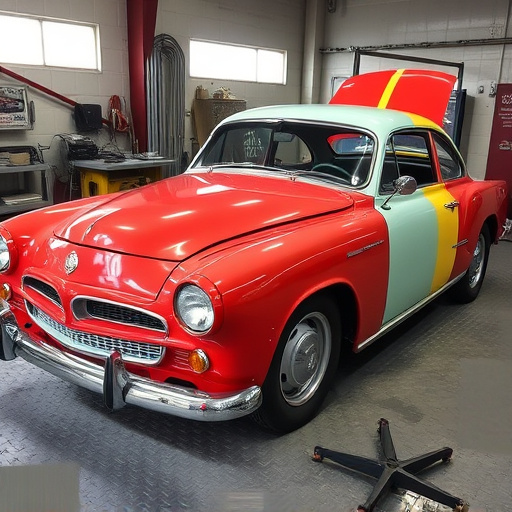Bumper paint matching is an art requiring meticulous detail work to restore automotive bumpers. It involves cleaning, sanding, priming, and using advanced tools for color matching, addressing dents, and applying fresh coats that cure properly. Proper surface preparation with specialized cleaners, sandpaper, and body putty ensures flawless results. A detailed prep process includes thorough cleaning, gentle sanding, wet sanding, and primer application for better adhesion and coverage.
Bumper paint matching is an art that demands precision and skill. Achieving a flawless finish on automotive bumpers requires understanding the basics of color theory, proper preparation, and advanced finishing techniques. This comprehensive guide delves into the essentials of bumper paint matching, from mastering color mixing to ensuring optimal surface readiness for long-lasting results. Discover expert tips on prep and finishing to elevate your skills in this intricate process.
- Understanding Bumper Paint Matching Basics
- Prepping Surfaces for Optimal Adhesion
- Techniques for Achieving Seamless Finishes
Understanding Bumper Paint Matching Basics
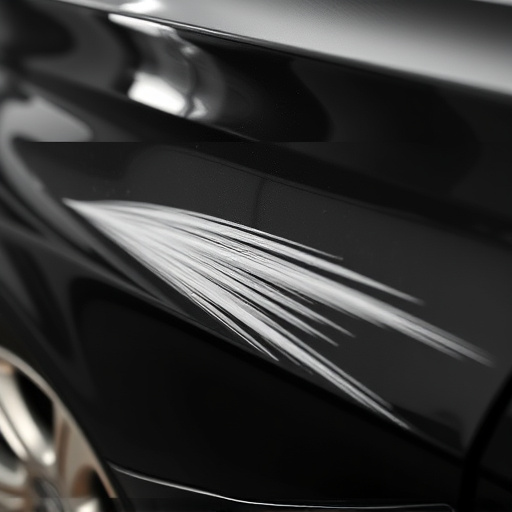
Bumper paint matching is an art that involves expertly repairing and restoring damaged or faded automotive bumpers to their original condition. It’s a process that requires a keen eye for detail, as even the slightest imperfection can be noticeable in a car’s overall appearance. Understanding bumper paint matching basics starts with recognizing that it goes beyond mere color application. Proper prep work is crucial; this includes thoroughly cleaning and sanding the bumper to ensure a smooth surface, then applying primer to seal and prepare the area for painting.
The goal of bumper paint matching isn’t just to match the color but also to mimic the original finish’s texture and gloss. Skilled technicians use specialized tools and techniques like computer-aided color matching and advanced sandpaper grains to achieve this. Once prepped, the car dent removal process begins, addressing any underlying damage or dents that could affect paint application. After careful preparation, a fresh coat of paint is applied, allowing it to dry and cure before undergoing a final inspection to guarantee a flawless bumper paint job, worthy of any professional car repair shop.
Prepping Surfaces for Optimal Adhesion
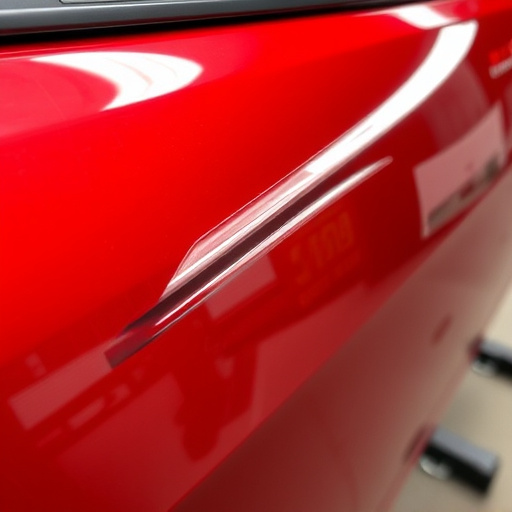
Before applying bumper paint matching, ensuring proper surface preparation is paramount for achieving a flawless finish. The process begins with thoroughly cleaning and decontaminating the damaged area to eliminate any grease, dirt, or residue that could impede adhesion. This step often involves using specialized cleaners and degreasers, along with fine-grit sandpaper to roughen the surface, creating a texture that enhances paint grip.
For optimal results in auto repair shops or car dent repair scenarios, it’s crucial to fill any gaps or imperfections with appropriate body putty before sanding. This step smoothens the way for subsequent priming and painting, as a well-prepared surface guarantees better car paint repair outcomes.
Techniques for Achieving Seamless Finishes
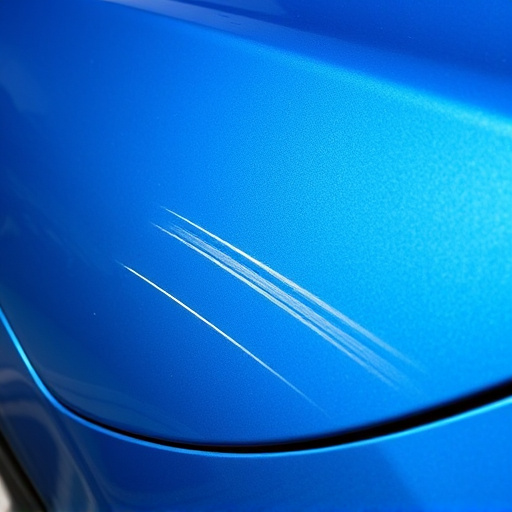
Achieving seamless bumper paint matching requires a meticulous approach to preparation and finishing. Before applying new paint, it’s crucial to thoroughly clean and inspect the bumper, removing any dirt, grease, or residue. Sanding the surface gently with fine-grit sandpaper helps create a smooth base, ensuring better adhesion for the fresh coat of paint. This step is particularly vital in repairing hail damage, as it allows the new paint to bond properly with the existing material.
For optimal results, consider using techniques like wet sanding and applying primer before painting. Wet sanding involves using water and fine sandpaper to achieve a smooth finish without leaving behind unsightly scratches. Primer acts as a bridge between the bumper’s metal and the paint, providing better coverage and durability, especially in collision repair scenarios. These methods contribute to a professional-looking, long-lasting car restoration, ensuring that the repainted bumper seamlessly blends with the vehicle’s original color.
Proper preparation and finishing techniques are key to achieving flawless bumper paint matching. By understanding the basics, prepping surfaces meticulously, and employing seamless finish techniques, you can ensure a professional, long-lasting result. These steps are essential for maintaining the aesthetic and protective integrity of your vehicle’s bumpers, making bumper paint matching a crucial skill for any DIY enthusiast or automotive professional.
